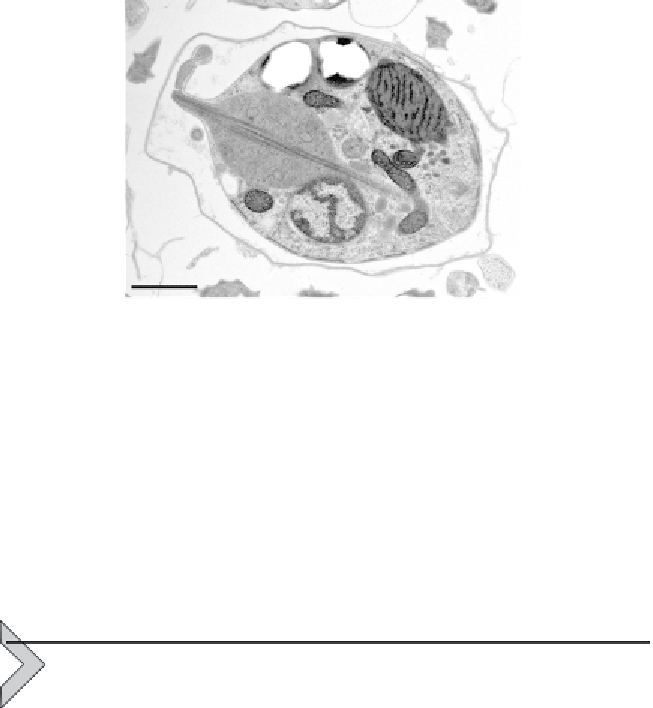Biology Reference
In-Depth Information
Figure 8.15 Transmission electron microscopy of chromerosome, the unique
organelle-like structure in the cell of C. velia. Longitudinally sectioned chromerosome
with a twisted proboscis and central bundle of fibers. Function of this organelle-like
structure remains unknown (scale bar
¼
1
m).
m
also showed that this flagellum-like extension does not contain any micro-
tubular structures. Since it roughly resembles trichocysts of dinoflagellates,
we have speculated that chromerosome could be used for hunting algae
or other prey, if
Chromera
was a mixotroph (
Oborn´k et al., 2011
). On
the other hand, no support for this alimentation has been found so far, since
C. velia
grows as a full phototroph on light without any external source of
organic carbon.
6. METABOLISM OF CHROMERIDS
6.1. Unique pathway for tetrapyrrole biosynthesis
Tetrapyrroles are cyclic compounds that are, with a single known exception,
essential for life (
Koˇen´ et al., 2012
). Organisms synthesize tetrapyrroles
either
de novo
(the most abundant being usually heme and chlorophyll) or
have to scavenge them from their diet. The tetrapyrrole pathway is
extremely conserved in both prokaryotes and eukaryotes, with the synthesis
of the first common precursor, aminolevulinic acid (ALA), representing the
only exception from this rule. In
a
-proteobacteria and all primary hetero-
trophic eukaryotes, this crucial compound is synthesized by condensation
of succinyl-CoA and glycine in the so-called C4 or Shemin pathway in
two steps catalyzed by ALA synthase (ALAS) in the mitochondrion. ALA
is consequently exported into the cytosol where the next four steps take
place usually. Yet in heterotrophic eukaryotes such as animals and fungi,


Search WWH ::

Custom Search